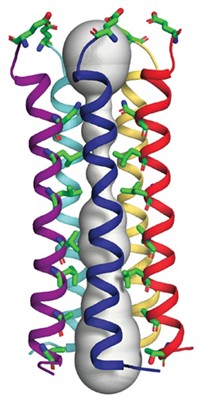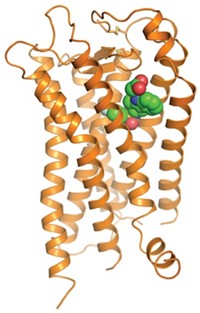Advertisement
Grab your lab coat. Let's get started
Welcome!
Welcome!
Create an account below to get 6 C&EN articles per month, receive newsletters and more - all free.
It seems this is your first time logging in online. Please enter the following information to continue.
As an ACS member you automatically get access to this site. All we need is few more details to create your reading experience.
Not you? Sign in with a different account.
Not you? Sign in with a different account.
ERROR 1
ERROR 1
ERROR 2
ERROR 2
ERROR 2
ERROR 2
ERROR 2
Password and Confirm password must match.
If you have an ACS member number, please enter it here so we can link this account to your membership. (optional)
ERROR 2
ACS values your privacy. By submitting your information, you are gaining access to C&EN and subscribing to our weekly newsletter. We use the information you provide to make your reading experience better, and we will never sell your data to third party members.
Biological Chemistry
Structural Insights Into Shigella Virulence Factor
September 22, 2008
| A version of this story appeared in
Volume 86, Issue 38
In 2006, the VirA virulence factor for the pathogenic bacterium Shigella flexneri was identified via biochemical assays as a protease that degrades microtubules in cells (Science 2006, 314, 985). Two independent groups now report X-ray crystal structures that suggest VirA neither functions as a protease nor degrades microtubules. Both the 2.4-Å structure by Benjamin W. Spiller and coworkers of Vanderbilt University Medical Center (Biochemistry, DOI: 10.1021/bi801533k) and the 3.0-Å structure by Alexander Wlodawer and coworkers of the National Cancer Institute's Macromolecular Crystallography Laboratory (Protein Sci., DOI: 10.1110/ps.037978.108) show that VirA is V-shaped with a prominent cleft between the N- and C-terminal domains. VirA had been thought to be similar to papain, a cysteine protease found in papaya, but the structures indicate that VirA lacks homology with papain or any other known protease. In biochemical assays by both teams, purified VirA alone is unable to cleave tubulin. Both teams suggest that VirA may act as a scaffold for an as-yet-undetected cellular factor, perhaps even a cysteine protease.






Join the conversation
Contact the reporter
Submit a Letter to the Editor for publication
Engage with us on Twitter